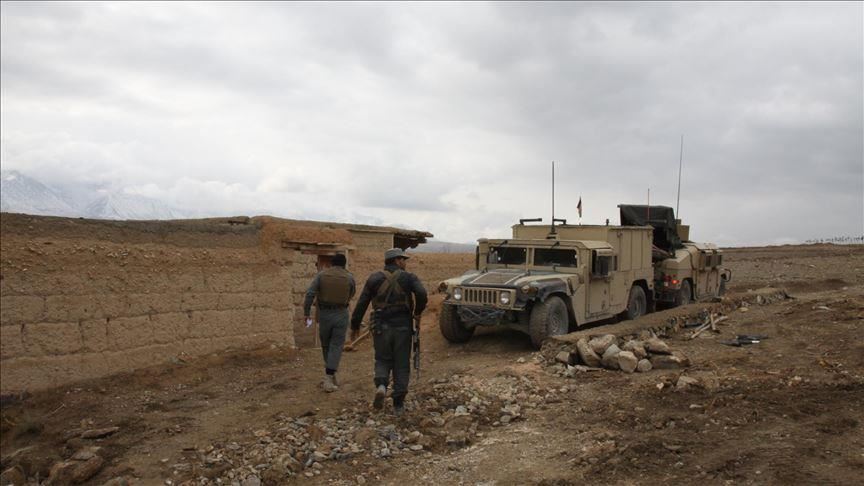Erratic swings in weather patterns add to Afghans' woes
Afghanistan faces lower agriculture productivity, droughts and ecosystem problems due to climate change

KABUL, Afghanistan
The heated global debate over climate change hardly sounds relevant to war-ravaged Afghanistan, but the mountainous country is quietly bearing the brunt of its effects.
The backbone of the Afghan economy, agriculture, has been worst hit amid erratic swings in weather patterns causing long and unusual drought spells and then sudden and untimely rains, leaving poorly equipped and untrained Afghan farmers and shepherds hopeless.
Lost in deep thought, Mohammad Raheem of the country’s traditional nomad community was gazing at his sheep herd as they grazed on a small patch of land in Logar province southeast of the capital Kabul. Raheem, who wears the traditional Kandahari cap, is in his mid-20s. He has been a shepherd for more than half his life.
“In recent years, the patterns of rain and snow have been really erratic. There was a drought-like situation for years, and then suddenly we received an abundance of rain and snow late in winter and spring this year. It was good but too late, since we had already sold livestock out of desperation at throwaway prices as they were dying of hunger prior to the rains,” he told Anadolu Agency.
In the traditional agrarian Afghan society, nomads like Raheem with their large herds of sheep, goats, cows and bulls have been shuttling between the colder and warmer parts of the country in the summer and winter.
Extreme droughts in parts of Afghanistan last year forced nearly 300,000 people to flee their homes in a month, according to the Office for the Coordination of Humanitarian Affairs (OCHA), part of the United Nations Secretariat responsible for bringing together humanitarian actors in Afghanistan. As per UN estimates, 225 districts in 20 provinces were affected by drought.
The droughts have also left devastating impacts on the traditional pasture lands, said Nasru Uddin, manager of natural resources at the Directorate of Agriculture, Irrigation and Livestock in Logar.
“The pasture land in this province is on the verge of extinction. Some areas have been encroached upon by warlords and other areas merged into the city with the construction of roads and buildings, but the drought has hit grazing areas the hardest,” he added.
Help sought from Green Climate Fund
The 2012 Global Adaptation Index ranked Afghanistan among the most vulnerable countries in the world in terms of climate change, although it contributes only 0.06% of total global greenhouse gas emissions. Afghanistan’s total greenhouse gas emissions are below the global median of 40.4 tons of carbon dioxide (CO2) equivalent.
The mean annual temperature in Afghanistan is projected to increase by 1.4-4.0°C by 2060 and by 2.0-6.2°C by 2090, which is likely to lead to lower agriculture productivity, droughts and food security problems as well as biodiversity and ecosystem problems.
The country’s National Environment Protection Agency (NEPA) recently received meager compensation of $300,000 from the Green Climate Fund for these impacts. The fund is a financial mechanism under the UN which helps fund climate finance investment for low-emission climate-resilient development.
The deputy head of NEPA, Idrees Malyar, said Afghanistan remains among the top 10 vulnerable countries in terms of climate change impacts.
“Previously, we used to witness a spell of drought after some 10 years, but now this cycle is reoccurring after every two or three years, which is very worrying,” he told Anadolu Agency.
Malyar said Afghanistan needs at least $17.4 billion to fight the devastating impacts of climate change until 2030.
Anadolu Agency website contains only a portion of the news stories offered to subscribers in the AA News Broadcasting System (HAS), and in summarized form. Please contact us for subscription options.







